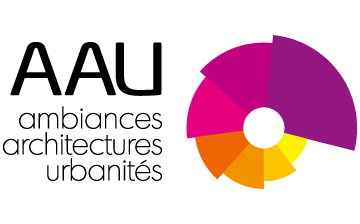Des démarches de cocréation des ambiances urbaines comme leviers de la marchabilité en banlieue
Cocreating urban atmospheres as levers to enhance walkability in suburban areas
Mathilde C. Loiselle Thèse de doctorat débutée en 2021
Encadrement : Co-directeurs de thèse : M. Sébastien Lord (Professeur agrégé, Faculté de l'aménagement, Université de Montréal) et Rachel Thomas.
Financement : Fonds de recherche Société et Culture du Québec
FR
Ce projet propose de s’interroger sur le rôle de l’habitant dans la configuration des ambiances de marche en milieu pavillonnaire, notamment dans une perspective de transformation. Milieux construits, fonctionnellement ségrégués et largement privatisés, ces milieux offrent souvent une expérience de marche de faible qualité au regard des critères classiques de marchabilité. Ces critères qui reposent essentiellement sur des indicateurs de densité, de diversité et de design, sont toutefois problématiques en deux points lorsqu’utilisés pour apprécier l’expérience de marche en milieu pavillonnaire. D’une part, ils cantonnent ce milieu au rang de mauvais élève du fait de sa forme urbaine inadaptée et difficilement adaptable aux impératifs de densité et de diversité. D’autre part, leur appréciation prend rarement en compte l’expérience habitante dans ses dimensions sensibles.
S’intéressant à la (re)fabrique des milieux pavillonnaires et dans le but de contribuer à la réflexion quant à leur viabilité écologique comme sociale, le projet met à l’épreuve une démarche de cocréation des ambiances comme levier de l’amélioration de la marchabilité au sein de ces milieux. Prenant appui sur l’expérience ordinaire du passant, la démarche participe à la formulation de « désirs communs » qui aiguillent la transformation urbaine de ces milieux. Dans le développement de cette démarche, je m’investis des préoccupations quant aux dimensions politiques des ambiances dont notamment celles qui concernent leur instrumentalisation dans le contexte de la fabrique urbaine.
Mots-clés : marche, banlieue, expérience sensible, cocréation, ambiances
EN
This doctoral study examines the role of inhabitants in the configuration of walking ambiances in suburban areas, particularly in a perspective of transformation. Built environments, functionally segregated and largely privatized, these environments often offer a poor walking experience with regard to the classic walkability criteria. Essentially based on indicators of density, diversity and design, these criteria are, however, problematic in two ways when used to assess the walking experience in suburban environments. On the one hand, taking into account the complexity of densifying and adding diversity to these spread environments, they leave with no apparent solution suburban communities in regard to enhancing the quality of their walking environments. On the other hand, their assessment rarely considers the sensitive dimensions of the inhabitants’ experience.
Interested in the (re)fabrication of suburban environments and with the aim of contributing to the reflection on their ecological and social viability, the project puts to the test an approach of co-creation of ambiances as a lever for the improvement of walkability within these environments. Based on the ordinary experience of the passer-by, the approach participates in the formulation of « common desires » that guide the urban transformation of these environments. In the development of this approach, I invest myself with concerns about the political dimensions of ambiances, particularly those concerning their instrumentalization in the context of the urban fabric.
Keywords : Walk, suburbs, sensitive experience, co-creation, atmospheres
